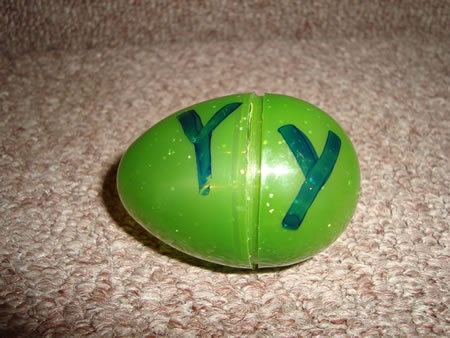

The Wheels on the Bus (Nursery Rhymes and Good Old Times CD)
The wheels on the bus (Move hands in circular motion.)
Go round and round,
Round and round,
Round and round.
The wheels on the bus
Go round and round,
All around the town.
Wipers – swish, swish, swish… (Palms up and move back and forth.)
Horn – beep, beep, beep… (Pretend to beep horn.)
Lights – blink, blink, blink… (Open and close fists.)
Doors – open and shut… (Palms together, then spread apart.)
Driver on the bus…”Move on back”… (Stick up thumb.)
Children on the bus – bounce up and down…(Bounce up and down.)
Activities:
Have children line up behind each other and pretend to be on a bus as they walk around the room and sing.
Let children suggest other people on the bus and what they would do. For example, “The babies on the bus go waa, waa, waa,” or “The teacher on the bus goes shh, shh, shh!”
Take a “pretend” field trip by having the children get on a school bus and pretend they are going on a trip. Sing songs, look out the window, and use your imaginations!
Make a graph of the different ways children come to school. Use picture clues, such as a bus, car, bike, and shoes (walk).
Brainstorm all the types of transportation you can think of.
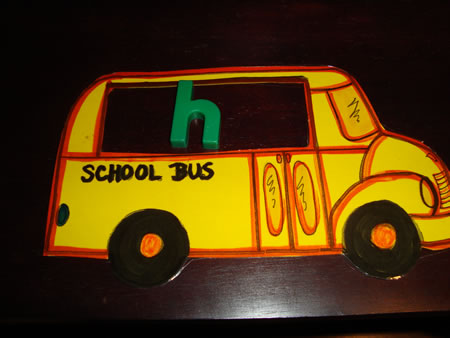
Color and cut out the bus you can download using the Downloads link in the menu at the top left. Attach magnetic tape to the back and place it on a magnetic board. Let children take magnetic letters and place them in the window as they sing:
The T on the bus goes /t/, /t/ , /t/, /t/, /t/, /t/, /t/, /t/, /t/. The T on the bus goes /t/, /t/, /t/, All around the town.
Three Little Kittens
The three little kittens, (Fingers together and thumbs extended
They lost their mittens, as if wearing mittens.)
And they began to cry, (Rub eyes and pretend to cry.)
“Oh, mother dear, we sadly fear,
our mittens we have lost.”
“What, lost your mittens? (Hands on hips as if scolding.)
You naughty kittens! (Point finger.)
Then you shall have no pie.” (Shake head “no.”)
“Boo-hoo, boo-hoo, (Pretend to cry.)
we shall have no pie.”
The three little kittens, (Hold up “mittens” again.)
They found their mittens,
And they began to cry, (Bounce up and down.)
“Oh, mother dear, see here, see here, (Show “mittens.”)
our mittens we have found.”
“What, found your mittens, (Stretch out palms.)
you darling kittens! (Hug self.)
Then you shall have some pie.”
“Meow, meow, (Pretend to purr.)
we shall have some pie.”
Activities: Children love to act out this song and be the little kittens.
Give each child a paper plate and ask them to pretend they are kittens. Tell them to put their hands behind their backs and then pour a little milk in their plate. Children try to be like kittens and lap up the milk. Too fun!!!
Play a game called “Where’s Kitty?” Place flash cards with skills you are working on in a pocket chart or on the floor. Children cover their eyes as the teacher hides a paper kitten behind one of the cards. Children take turns guessing where the kitten is hiding and looking under the card. The first child to find “kitty” gets a turn to hide it. Hint! Use “google images” to find quick pictures of kittens, bears, etc.
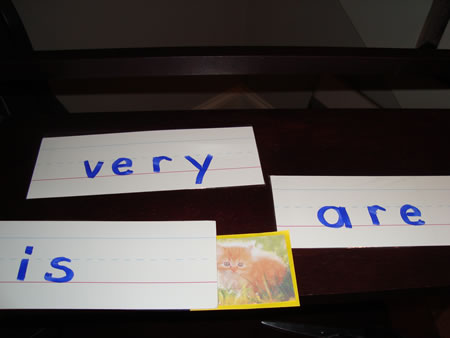
Download the mitten patterns with the link at the top left and create your own games to reinforce skills.
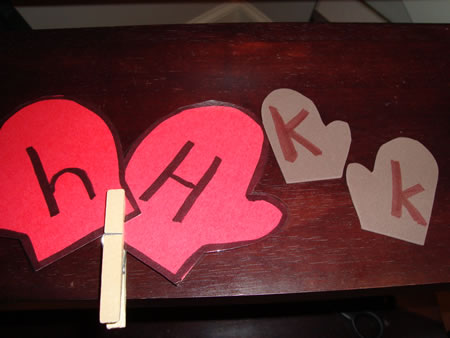
TEDDY BEAR
Teddy Bear, Teddy Bear,
Turn around. (Turn around.)
Teddy Bear, Teddy Bear,
Touch the ground. (Touch ground.)
Teddy Bear, Teddy Bear,
Read the news. (Pretend to read.)
Teddy Bear, Teddy Bear,
Tie your shoes. (Bend down to shoes.)
Teddy Bear, Teddy Bear,
Go upstairs. (Climb stairs.)
Teddy Bear, Teddy Bear,
Say your prayers. (Fold hands.)
Teddy Bear, Teddy Bear,
Turn off the light. (Pretend to switch.)
Teddy Bear, Teddy Bear,
Say, “Good night.” (Place head on hands and close eyes.)
*You can change, “Say your prayers,” to “Comb your hair” if you wish.
Activities: Staple a paper bear to a straw. Have children use their bear to make the movements in the poem. Call out other positional words and directions for the children to follow with their bear puppets.
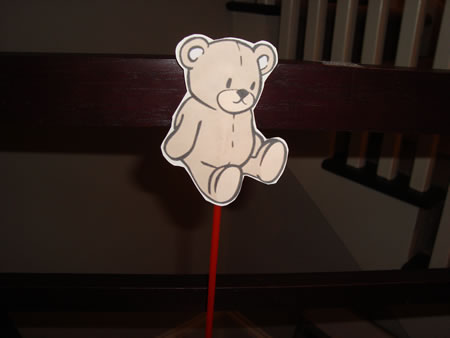
Let children bring a favorite stuffed animal or teddy bear from home and have a teddy bear parade. You could even have a special “Teddy Bear tea party” for your bear friends and read books about bears.
Make a T-chart and have children suggest differences between real bears and stuffed animals.
Make teddy bear sandwiches with cookie cutters in the shape of bears. Cut bread using the cookie cutter and spread with peanut butter or cream cheese. Use raisins for eyes and dried cranberries for a mouth.
Bluebird, Bluebird, through My Window
Bluebird, bluebird, through my window. (Children stand in a circle and hold
Bluebird, bluebird, through my window. hands up high in the air. One child
Bluebird, bluebird, through my window. is chosen to be the bluebird and
Oh, Johnny, I’m so tired. weave in and out of the circle.)
Find a little friend and tap them on the shoulder. (“It” taps a friend on the shoulder.
Find a little friend and tap them on the shoulder. Both children then weave in and
Find a little friend and tap them on the shoulder. out of the circle.)
Oh, Johnny I’m so tired.
Instead of having children tap friends to join the game, sing each verse using a different colored bird. For example: yellow bird, red bird, orange bird, etc.
Activities: Make bird watchers out of paper towel rolls. Cut paper towel rolls in half and tape together. Punch holes on both sides of the top and tie on a piece of string so it can be worn over the head. Decorate with markers and crayons. Go bird watching on the playground.
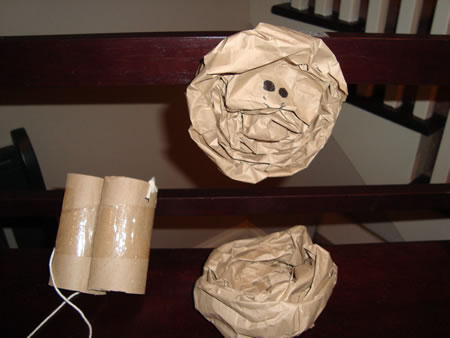
Make bird nests from paper lunch bags. Open the bags and then roll out and down. Check out bird identification books from the library. Provide children with construction paper and let them create their favorite bird. Draw the shape of a tree on a bulletin board. Staple nests to the branches and then insert construction paper birds.
Turn the nest over and insert your fingers to make a bird puppet. Add eyes and a beak.
Let children roll play dough eggs to go in the nests.
Cut out pictures of things that start with “n” and glue them on the nest.
Use plastic eggs to make matching games. Write the uppercase letter on one half of the egg and the lowercase letter on the other half. Write onsets on the left side of the egg and a rime on the right side. Use eggs to spell two letter words.
